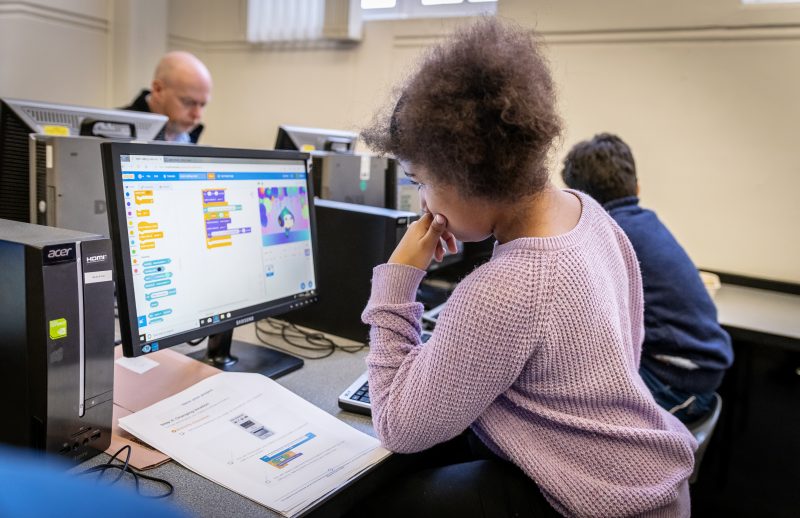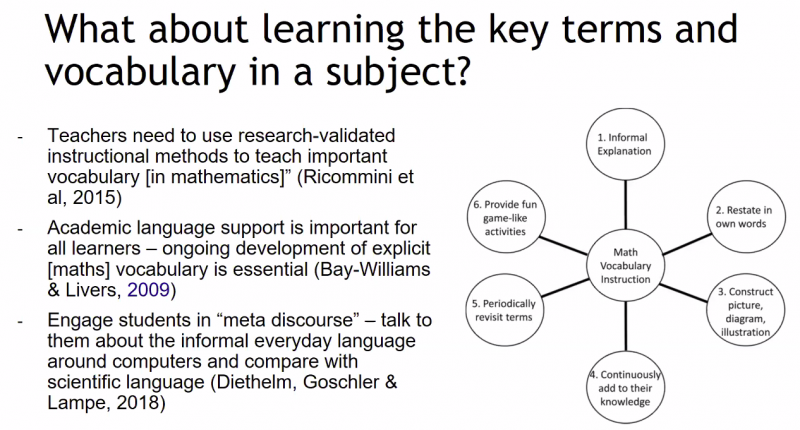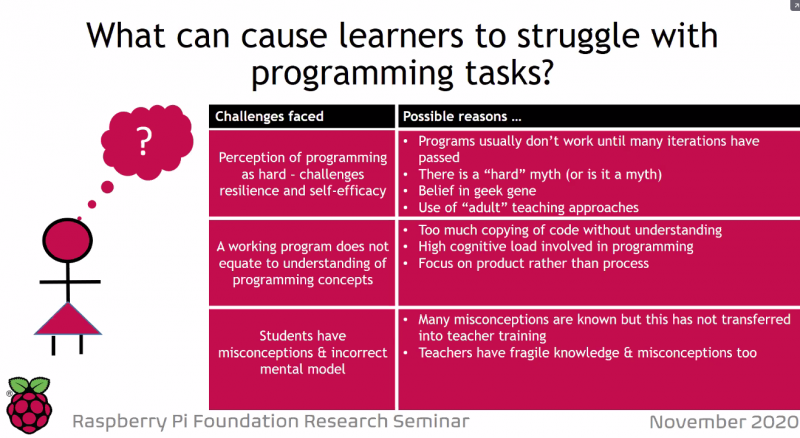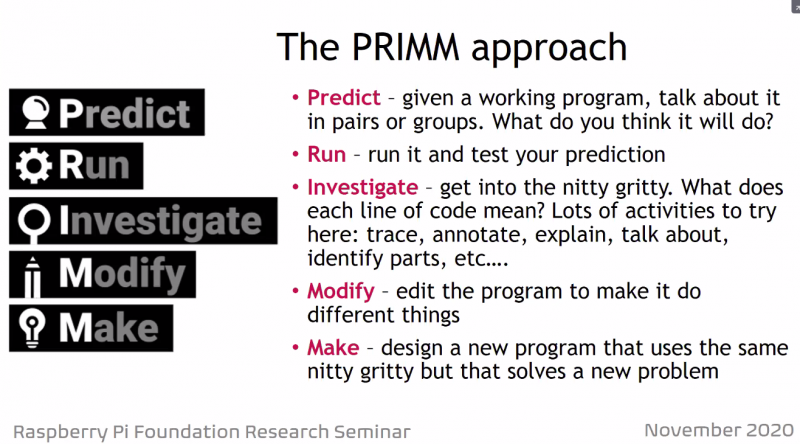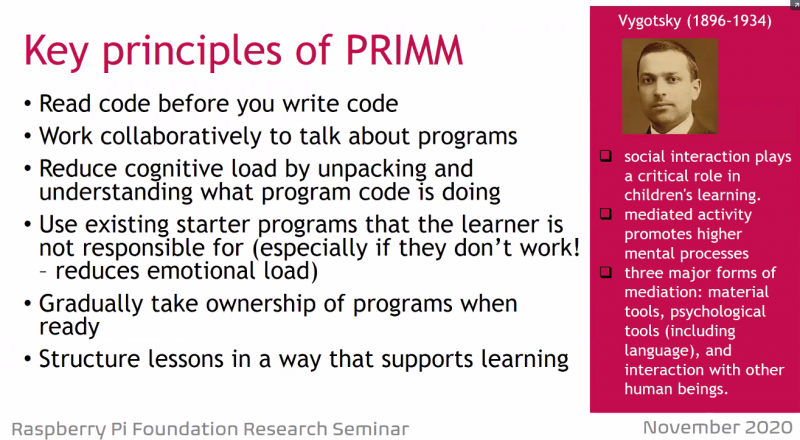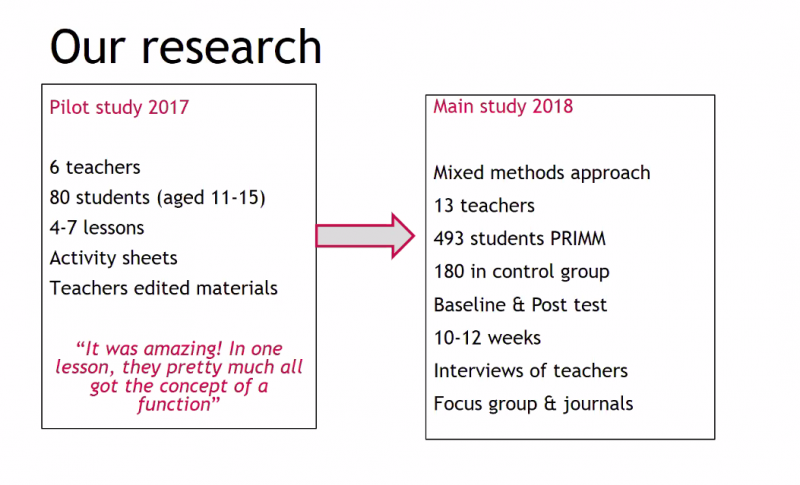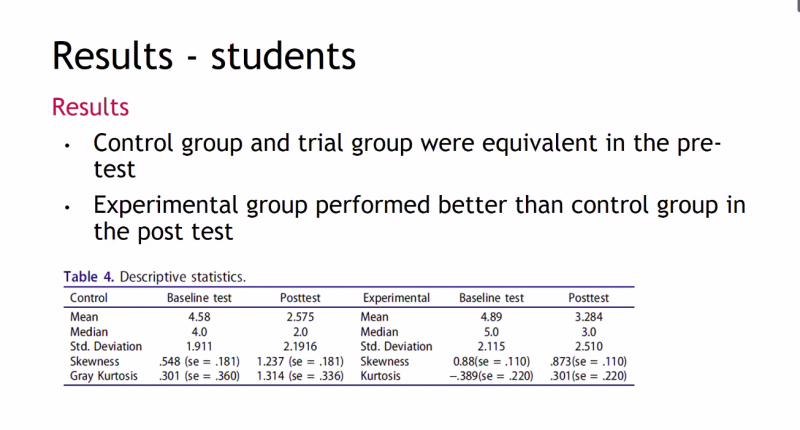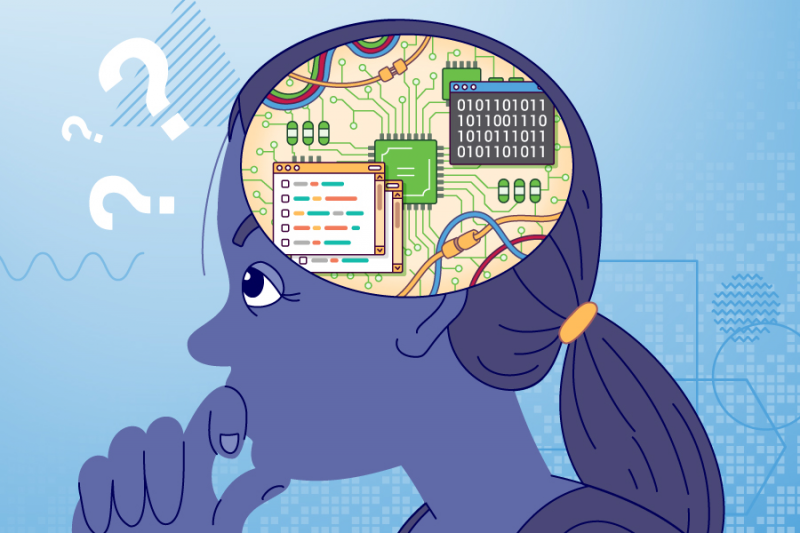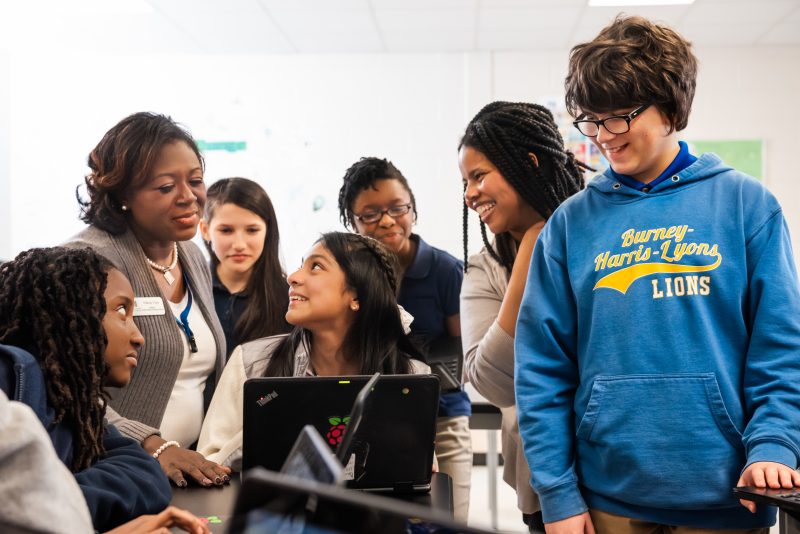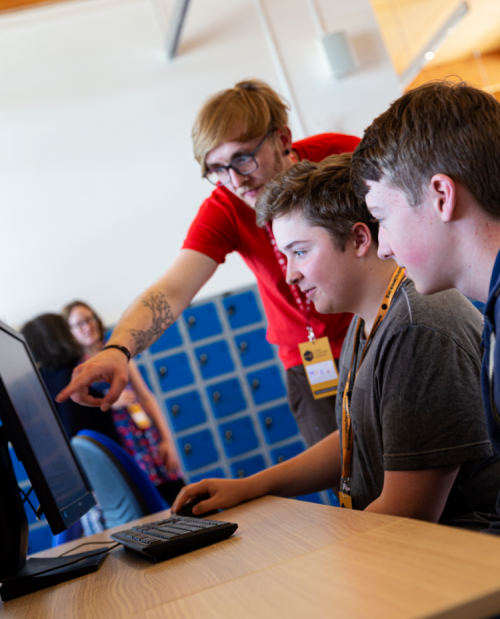Post Syndicated from Oliver Quinlan original https://www.raspberrypi.org/blog/culture-computing-stem-education-diversity-research-seminar/
It can be easy to think of science, technology, engineering, and maths (STEM) as fields that develop in a linear way, always progressing towards ever better solutions and approaches. Of course, alternative solutions are posed to all sorts of problems, but in western culture, those solutions that did not take hold are sometimes seen as the approaches that were ‘wrong’ or mistaken, and that eventually gave way to the ‘right’ approaches. A culture that includes the belief that there is only one ‘right’ way can be alienating to anyone who sees the world in a different way.
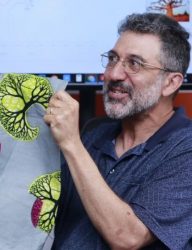
Dr Ron Eglash from the University of Michigan explored the intersections of diverse cultural ideas and computing in his talk at the final research seminar in our series about diversity and inclusion (see below for the recorded video). His work and insights show us how we might think about diversity in computing as being dependent on the diversity of cultural concepts and beliefs that can underpin the subject. Ron also shared free resources for educators who want to help their students learn about STEM while exploring cultural ideas.
Where do our ideas about computing and STEM come from?
Ron’s talk explored the overlaps of technology, culture, and society. In his research work, Ron has facilitated collaborations across the world between STEM students and people from indigenous cultures, opening up computing to people who have different backgrounds and different ways of seeing the world and, in the process, revealing many complex assumptions that different cultures have about computing and technology.
Ron’s work challenges some of the assumptions in western culture about technological knowledge. He started his talk by showing the evolution of knowledge as a branching set of possibilities and ideas that societies choose to move forward with or leave behind. To illustrate, he gave examples of different concepts of mathematics that western society has taken on board, refined, or discarded throughout its history, demonstrating that there are different versions of mathematics we could have had but chose not to.
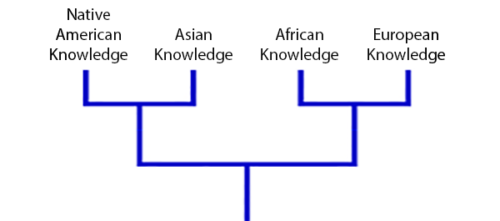
These different choices in adoption and exploration of ideas, Ron continued, are more evident when one looks at the knowledge systems of different cultures side by side: different knowledge systems represent different paths that groups of people have chosen — not in totality but as the result of smaller decisions that select which ideas will be influential and which will be eliminated.
What ideas pattern our cultures?
One idea that western society has chosen, and that Ron highlighted for us, is the extraction of value. This is something we can see across this society, and it’s a powerful idea that fundamentally shapes how many of us think about the world. We extract value from the natural world in the way we exploit raw materials. We extract value from labour through the organisation of working arrangements that we have made the norm. And we extract value from social relationships through the online social media platforms, online games, and other digital tools that have so quickly become a central part of billions of people’s lives.

But western culture, with its particular knowledge system and core tenet of value extraction, represents just one possible way of social and technical development. In nature, systems do not extract value, they circulate it: value moves in a recursive loop as organisms grow, die, and are subsumed back into the ecosystem. Many indigenous cultures have developed within this framework of circulating value. The possible benefits of a circular economy are becoming a topic of discussion in western society, and we would do well to remember that this concept is not western in origin: other cultures have been practicing it for a long time, a point Ron made clear in his talk. And as Ron showed us through his research, the framework of circulating value permeates various indigenous cultures in ways that go beyond approaches such as sustainable agriculture, and thereby creates repeating, fractal patterns in cultural artefacts at different scales, from artworks, to the way settlements are organised, to philosophical ideas.

In nature, there are many examples of fractal geometry because of biological and chemical phenomena of bottom-up growth and replication. Ron shared images gathered during his research that highlight that fractal patterns are also clearly visible in, for example, traditional African art: by using visual patterns of recursive and non-linear scaling, artists intentionally symbolised the bottom-up and circular ideas permeating their culture. African cultural concepts of recursion and non-linearity, which were also brought to the Americas during the transatlantic slave trade, can be seen today in, for example, cornrow hair braiding, quilting, growing traditions, and spiritual practices.

Computing activities based on circulation of value
The links between indigenous cultural concepts and computing algorithms are many. To explore these in the context of education, Ron and his team have worked in collaboration with members of indigenous communities to develop Culturally Situated Design Tools (CSDT), a suite of computing and STEM activities and learning resources that allow young people of a range of ages to discover the relationship between computing and programming concepts and cultural ideas that trace back to indigenous cultures. The CSDT development process Ron described involved genuine collaboration: seeking ‘cultural permission’ from communities; deeply understanding the cultural concepts behind the artefacts that were being developed; and creating tools that not only allow students to explore traditional designs and artefacts but also give them the scope to design their own original artefacts and to actively contribute to communities’ cultural practices.
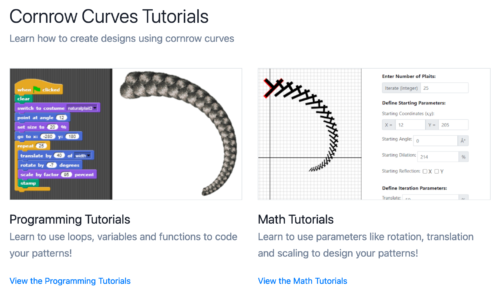
Ron underlined in his talk how important it is not to see activities like CSDT as a lure to ‘trick’ young people into engaging with STEM classes; the intention is not using them as a veneer to interest more young people in industries underpinned by an extractive world view. Instead, circular and bottom-up concepts are an alternative way of seeing how technology can be used to influence and construct the world.
Returning creative contributions
As such, an important aspect of the pedagogy of Culturally Situated Design Tools is returning creative contributions to the community whose concepts or artefacts are being explored in each activity. The aim is to create a generative cycle of STEM engagement, and Ron demonstrated how this can work by sharing more about a project he conducted with STEM students in Albany, NY. Students began the project by exploring cornrow design simulations. They brought these out of the computer, out of their schools, and into local braiding shops by producing 3D-printed mannequins featuring their cornrow designs. Through engaging with the braiding shop owners, the students learned that the owners had challenges to do with the pH level of hair products, and this led to the students producing pH testing kits for them. The practical applications benefitted the communities connected to the braiding shops and inspired more student interest in the project — thus, a circular, mutually beneficial process of engagement emerged.
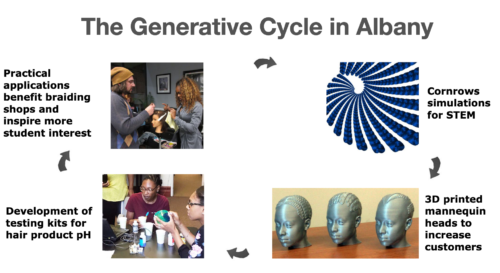
Importantly, the STEM activities that Ron and his collaborators have developed cannot be separated from their cultural context. This way of teaching STEM is not about recruiting young people to become software developers or other tech professionals, but instead about giving them the skills to be creative contributors and problem solvers within communities so that they can help promote the circulation of value.
Rethinking diversity
I have long been enthusiastic about the potential of computing and digital making as a tool for many disciplines, and Ron’s talk made me consider what this might mean at a much deeper level than providing different routes into computing. There is a lot of discussion about how we need to increase diversity in the STEM field to make the field more equitable and able to positively contribute to society, but Ron’s presentation challenged me to think about the cultural assumptions that shape the nature of STEM, and how these influence who engages with the field. Increasing diversity and inclusion in computing and STEM is not just a case of making opportunities open to everyone, but about actually re-shaping the nature of the field so it can be equitable in its interactions with ecological systems, cultures, and human experiences.
Do watch the video of Ron’s presentation and the following Q&A for more on these concepts, examples of the computing activities and how to use them, and discussion of these fundamental ideas. You’ll find his presentation slides on our ‘previous seminars’ page.
You can find the resources Ron shared at csdt.org and generativejustice.org/projects.
Join us at our next online seminar
We are taking a break from our monthly research seminars in August! In the meantime, you can revisit our previous seminars about diversity and inclusion. On 7 September, we’ll be back to start our new seminar series focusing on AI, machine learning, and data science education, in partnership with The Alan Turing Institute. At these seminars, you’ll hear from a range of international speakers about current best practices in teaching young people the technical concepts and ethical considerations involved in these technologies. Do sign up and put the dates in your calendar!
The post Exploring how culture and computing intersect appeared first on Raspberry Pi.
